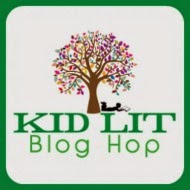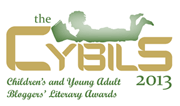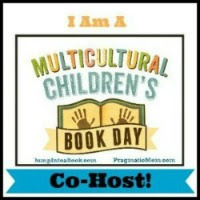I don't usually read a first book in a series and then jump the fifth book, but I'm afraid that is exactly what I've done with The Birchbark House series. But actually, it really didn't matter. Louise Erdrich is such a skillful writer that I found all the background information I needed to understand Makoons without having read Books 2, 3 and 4, while still making me want to read those three books.
Continuing the story of Omakayas, now married, and her Ojibwe family, it is 1866 and the family has moved west, living on the Great Plains of the Dakota Territory. As one of her 8-year-old twin sons, Makoons, recovers from an illness, he has a vision of what is to come - a vision that is filled with joy but also with sadness.
Away from their beloved river in Western Minnesota, there is no longer a need for canoes, and horses have become the passion of Makoons and twin brother Chickadee. Together, and they do everything together, they practice riding and hunting in anticipation of the day they can join the men in a real buffalo hunt.
After helping to prepare for and then witnessing their first hunt, the two boys find and adopt a young buffalo calf left behind as the adults buffalos fled their hunters. The young calf attaches itself to the twins and follows them wherever they go, even enjoying some of the peppermint candy they trade rabbit skins for. Gradually, the two boys began to pay attention and imitate the "language" of their "little brother" as they care for him.
So when the buffalo herds seem to simple vanish from the plains in thin air, and the Ojibwe begin to feel desperate and despairing, their father, Animikiins, convinces Makoons and Chickadee to try to call the animals back using the "language" they have "learned" from their calf. If it doesn't work, their small clan of Ojibwe will be faced with starvation and forced to move on. And though the buffalo return this time, it is clear they are moving west as the land becomes more and more populated by white settlers.
Once again, Omakayas and her family decide to move further west as well, to a place called Turtle Mountain, leaving behind her beloved sister Angeline and her husband Fishtail and their adopted young daughter Opichi.
As the joys and sorrows of Makoons vision play out, the family that readers have come to know and love face each challenge with strength, sorrow and some laughs. Makoons and Chickadee are two delightful characters, full of 8 year-old mischief, but kind and already sensitive to the world around them. Nokomis, the boy's great-grandmother, now quite old, plants a garden to help the family and spends her last days trying to keep the always hungry buffalo calf from eating it all; Yellow Kettel, their grandmother, is just a grouchy as ever; Deydey, their grandfather, is getting up in years and spends time with Nokomis but still makes the best bows and arrows for his grandsons, and continues play an important part in the daily life of the Ojibwe, though to a lesser extent.
All of this makes Makoons feels like a transition book, focusing on a younger generation, with Omakayas the bridge between the older and younger, and reflecting the changes coming in the times they are living in.
The life of the Ojibwe is described in detail, as they hunt, skin, and prepare food for the winter, when it becomes scare to find. Nothing is done without acknowledging the buffalo, called the "generous ones" for providing what is needed and nothing goes to waste. To waste what the buffalo give would be a sacrilege. But while Louise Erdrich depicts the very deep connection to the natural world that the Ojibwe clearly feel, she also shows how it is eroding as the modern world impinges more and more on their daily lives.
Makoons (meaning little bear in Ojibwe) is written in Erdrich's same lyrical prose that is so familiar now. She has also done the black and white spot illustrations that appear throughout the book. It amazes me how Erdrich can get some much into a story using such simple, straightforward language. There are Ojibwe words used throughout, but there is a glossary and pronunciation guide in the back matter to help readers.
Erdrich really knows how to craft her novels so that there is, like Makoons vision, a nice balance between joy and sorrow. There are, of course, the hard times and survival of this Ojibwe clan, there is the sadness as loved ones pass away, but there are also the endearing antics of Makoons and Chickadee. And for real comic relief, there are the lovesick antics of the overly vain Gichi Noodin, who is so smitten with Omakayas's adopted daughter, Zozie that he seems to do nothing but make a fool of himself whenever he tries to impress her.
Whether you have followed the lives of Omakayas and her clan from the beginning or whether Makoons is your first introduction to these wonderful multigenerational characters, I can't recommend them highly enough.
This book is recommended for readers age 8+
This book was an EARC received from Edelweiss/Above the Treeline



































I enjoyed Birchbark House Young readers would be fascinated by this peek into Native American culture.
ReplyDelete